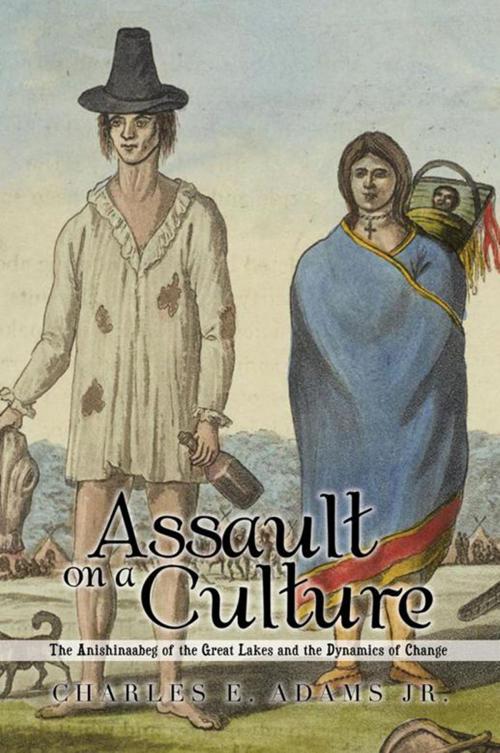Assault on a Culture
The Anishinaabeg of the Great Lakes and the Dynamics of Change
Nonfiction, History, Americas, Native American| Author: | Charles E. Adams | ISBN: | 9781483612935 |
| Publisher: | Xlibris US | Publication: | May 21, 2013 |
| Imprint: | Xlibris US | Language: | English |
| Author: | Charles E. Adams |
| ISBN: | 9781483612935 |
| Publisher: | Xlibris US |
| Publication: | May 21, 2013 |
| Imprint: | Xlibris US |
| Language: | English |
Anishinaabe ancestors first arrived in North America approximately 12,000 years ago when a thick sheet of ice covered much of the northern portion of the continent. The provenance in Asia of those peoples implies that the pathway taken to get to their Great Lakes home was long and arduous, severely testing the strength and resolve of those first Americans. For much of their tenure on the continent, the Anishinaabeg occupied a distinct, delicately balanced, socio-cultural niche that evolved primarily as responses to changes of the natural environment. Following first contact with European explorers about 500 years ago, European-Indian social and economic interactions including intermarriage, adoption of European trade goods, and loss of a life-sustaining and culture defining land base became dominant forces in Anishinaabe (Chippewa, Ottawa, and Potawatomi) culture change. The benevolent co-existence of the French, through the aggressive colonialism of the British, to the vigorous thrust by the United States to extinguish all Anishinaabe land title under the rubric of Manifest Destiny comprise the central focus of Assault on a Culture. By 1880, formal treaties between the United States and the Anishinaabeg, crafted entirely by the Americans to favor their own land-accumulating interests, led to the creation of an Indian population with little or no land to call their own and minimal talents that would be needed to survive without the land. While the various activities undertaken by the Euro-Americans put the Anishinaabe culture in extreme crisis, it was not destroyed. Today it thrives and strives to adapt to the ever changing demands of modern society, a clear indication of the strength and resolve of those indomitable people.
Anishinaabe ancestors first arrived in North America approximately 12,000 years ago when a thick sheet of ice covered much of the northern portion of the continent. The provenance in Asia of those peoples implies that the pathway taken to get to their Great Lakes home was long and arduous, severely testing the strength and resolve of those first Americans. For much of their tenure on the continent, the Anishinaabeg occupied a distinct, delicately balanced, socio-cultural niche that evolved primarily as responses to changes of the natural environment. Following first contact with European explorers about 500 years ago, European-Indian social and economic interactions including intermarriage, adoption of European trade goods, and loss of a life-sustaining and culture defining land base became dominant forces in Anishinaabe (Chippewa, Ottawa, and Potawatomi) culture change. The benevolent co-existence of the French, through the aggressive colonialism of the British, to the vigorous thrust by the United States to extinguish all Anishinaabe land title under the rubric of Manifest Destiny comprise the central focus of Assault on a Culture. By 1880, formal treaties between the United States and the Anishinaabeg, crafted entirely by the Americans to favor their own land-accumulating interests, led to the creation of an Indian population with little or no land to call their own and minimal talents that would be needed to survive without the land. While the various activities undertaken by the Euro-Americans put the Anishinaabe culture in extreme crisis, it was not destroyed. Today it thrives and strives to adapt to the ever changing demands of modern society, a clear indication of the strength and resolve of those indomitable people.















